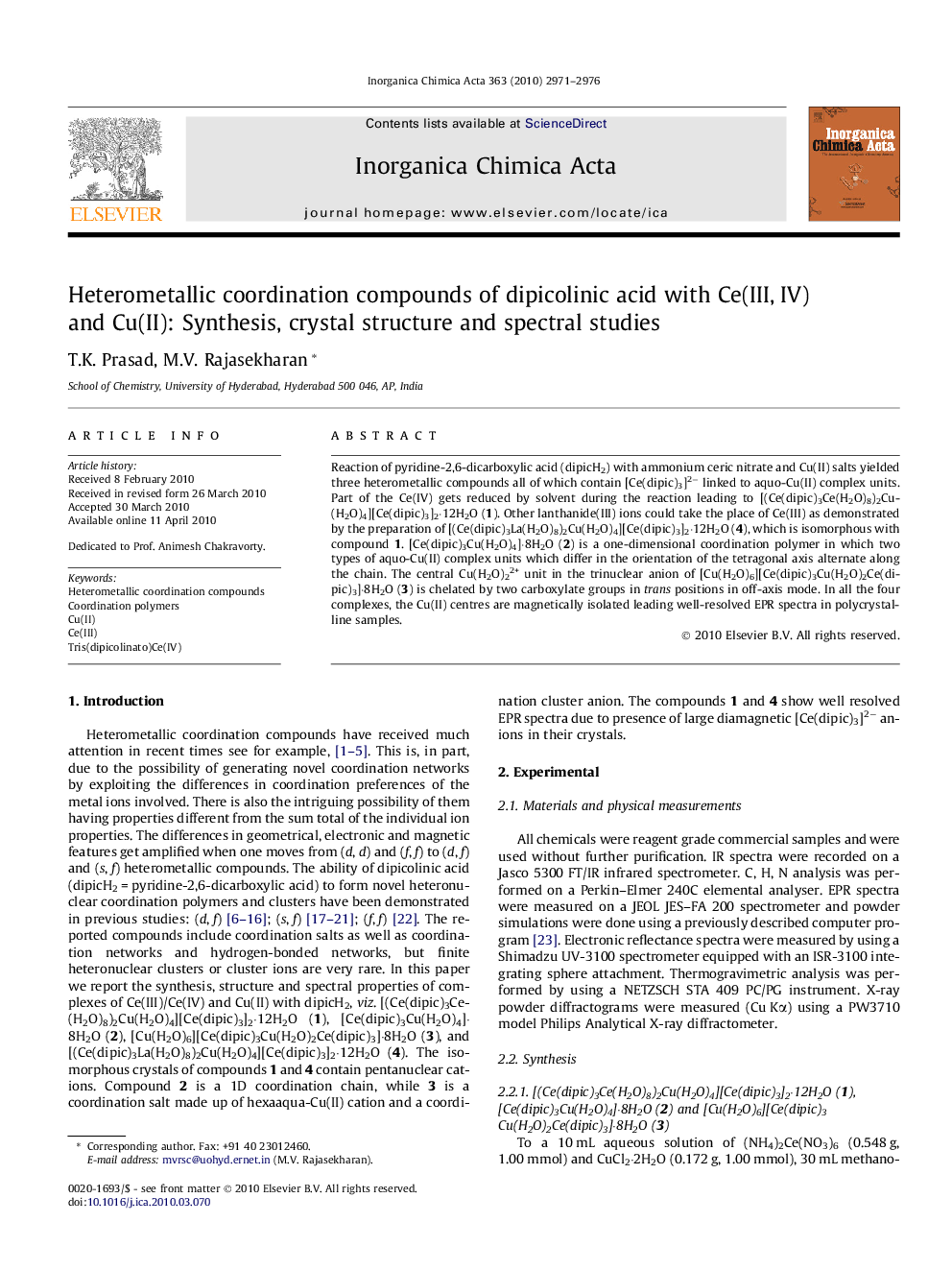| Article ID | Journal | Published Year | Pages | File Type |
|---|---|---|---|---|
| 1306911 | Inorganica Chimica Acta | 2010 | 6 Pages |
Reaction of pyridine-2,6-dicarboxylic acid (dipicH2) with ammonium ceric nitrate and Cu(II) salts yielded three heterometallic compounds all of which contain [Ce(dipic)3]2− linked to aquo-Cu(II) complex units. Part of the Ce(IV) gets reduced by solvent during the reaction leading to [(Ce(dipic)3Ce(H2O)8)2Cu(H2O)4][Ce(dipic)3]2·12H2O (1). Other lanthanide(III) ions could take the place of Ce(III) as demonstrated by the preparation of [(Ce(dipic)3La(H2O)8)2Cu(H2O)4][Ce(dipic)3]2·12H2O (4), which is isomorphous with compound 1. [Ce(dipic)3Cu(H2O)4]·8H2O (2) is a one-dimensional coordination polymer in which two types of aquo-Cu(II) complex units which differ in the orientation of the tetragonal axis alternate along the chain. The central Cu(H2O)22+ unit in the trinuclear anion of [Cu(H2O)6][Ce(dipic)3Cu(H2O)2Ce(dipic)3]·8H2O (3) is chelated by two carboxylate groups in trans positions in off-axis mode. In all the four complexes, the Cu(II) centres are magnetically isolated leading well-resolved EPR spectra in polycrystalline samples.
Graphical abstractCe(IV)–dipic–Cu(II) system leads to 3d–4f compounds containing different aquo-Cu(II) complex units and Ce(IV)/Ce(III). The diagram depicts a 1D coordination chain in which the Jahn–Teller elongation direction (in blue) of the Cu(OH2)4(Ocarboxylate)2 unit alternates along the chain (red ellipses represent [Ce(dipic)3]2− ion).Figure optionsDownload full-size imageDownload as PowerPoint slide
